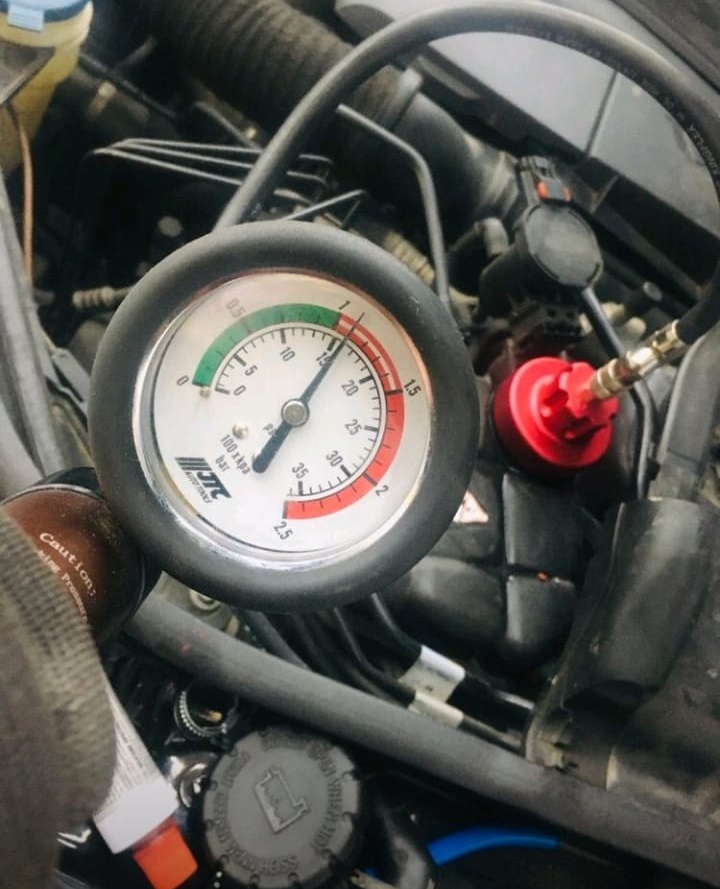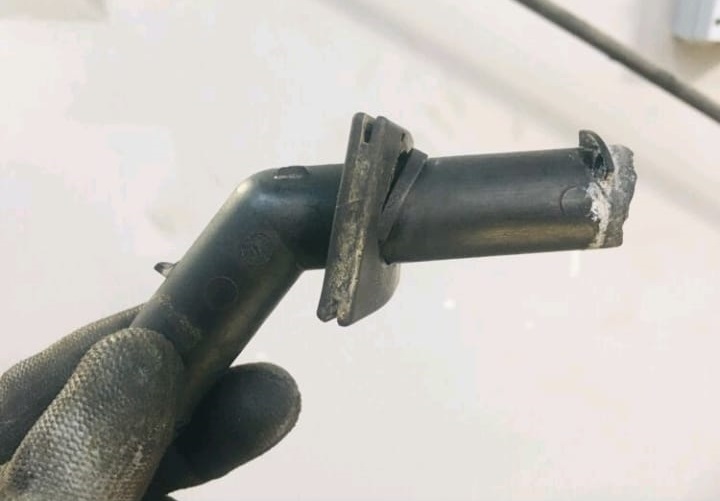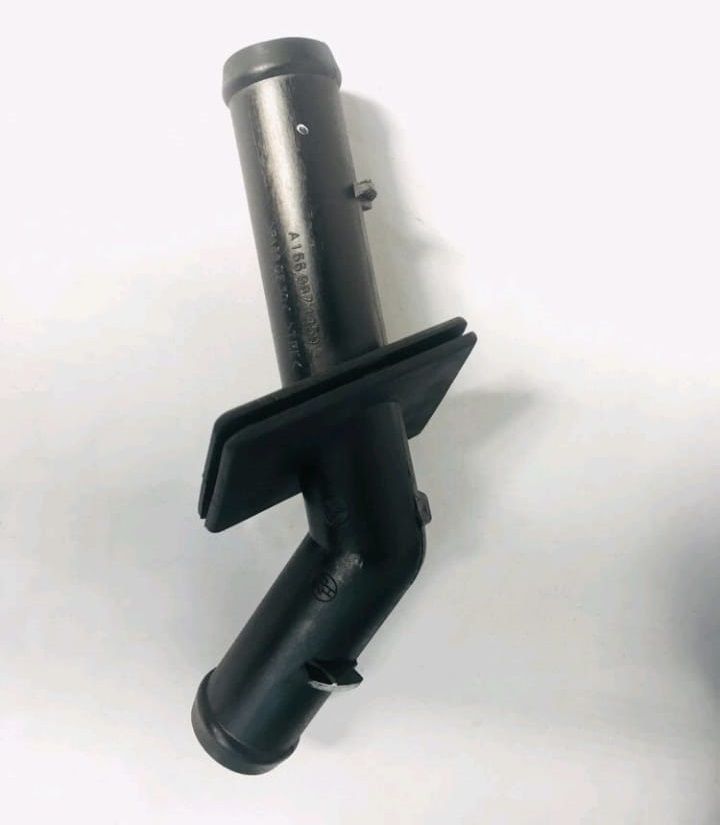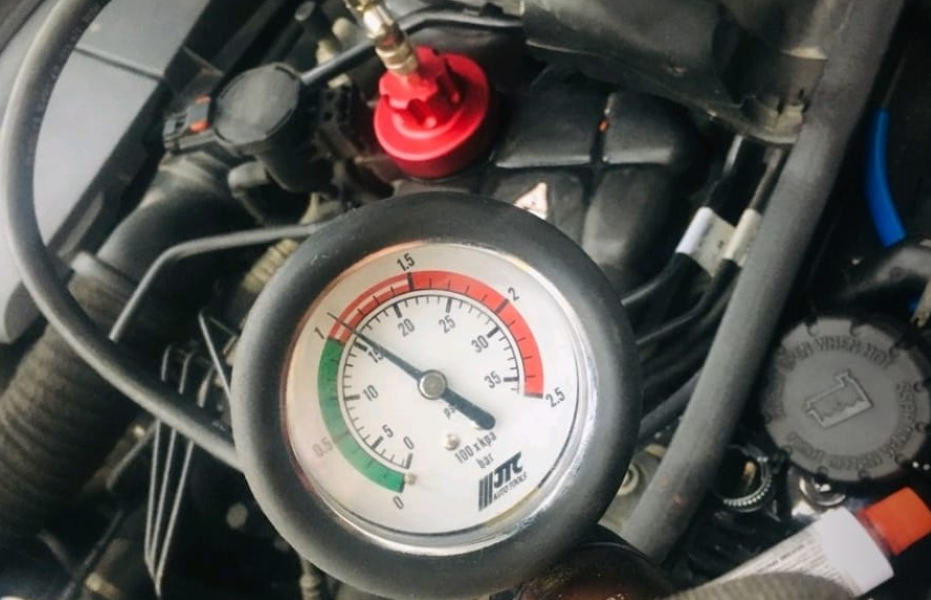Table of Contents
Case Study: Engine Coolant Low on Mercedes-Benz ML500 W166 (OM642 Engine)
If you’re driving a Mercedes-Benz ML500 W166 and suddenly see the “Engine Coolant Low” warning on your dashboard, don’t ignore it. Low coolant is more than just an inconvenience — it’s a sign that your engine’s cooling system may be compromised. Left unresolved, this fault can lead to overheating, head gasket damage, or even engine failure.
In this case study, we’ll walk through a real-world example of diagnosing and fixing an Engine Coolant Low fault in an ML500 equipped with the OM642 Engine. You’ll see the symptoms, diagnostic steps, root cause, repair process, and prevention tips that can help you avoid costly repairs.

Vehicle & Complaint
- – Model: Mercedes-Benz ML500 W166
- – Engine: OM642 V6 Diesel
- – Customer Complaint: “Engine Coolant Low” warning displayed on the instrument cluster
When the customer arrived, the warning had appeared multiple times after short trips. The engine itself seemed to run fine, but the risk of overheating was a major concern.
Why the Coolant Warning Matters
The cooling system in a Mercedes regulates temperature across critical components: the engine block, cylinder heads, turbocharger, and interior heating system. If coolant levels drop, the system loses efficiency. This can cause:
- – Hot spots inside the engine
- – Increased combustion chamber temperature
- – Overheating under load
- – Long-term damage to seals and gaskets
Simply topping up the coolant without diagnosing the cause of loss is a temporary solution that risks further breakdowns.
Step 1: Initial Diagnosis
The first step was a visual inspection of the engine bay and underbody. At first glance, there were no visible external leaks — the hoses, radiator, and coolant reservoir all looked normal.
Since small leaks can escape detection under static conditions, the technician used a coolant pressure tester to replicate real driving pressures. This tool pressurizes the system to factory specifications, helping locate hidden leaks.
Step 2: Leak Test Findings
When the cooling system was pressurized:
- – The pressure dropped quickly, indicating a leak.
- – Coolant began to drip onto the workshop floor.
- – Tracing the leak led to the underside of the vehicle, close to the heater hose assembly.
At this stage, it was clear the problem wasn’t in the radiator or reservoir, but deeper in the heating/coolant circuit.


Step 3: Locating the Fault
Closer inspection revealed the issue:
A plastic connector linking two heater hoses had cracked.
This small yet critical part had degraded over time. Constant heat cycles, pressure changes, and coolant exposure had caused the plastic to weaken and eventually fail.
This type of plastic connector failure is a common weak point in many Mercedes-Benz cooling systems. While durable at first, plastics can become brittle and lose structural integrity after years of operation.


Step 4: Repair Process
With the faulty part identified, the repair followed a structured process:
1. Remove the damaged connector
- – Both hoses were disconnected.
- – The cracked connector was carefully removed to avoid further damage.


2. Install a new connector
- – A genuine Mercedes-Benz replacement part was used.
- – Hoses were reattached and secured with fresh clamps to ensure a leak-proof seal.

3. Refill the cooling system
- – The system was filled with Mercedes-Benz approved coolant (MB 325.0 or equivalent).
- – The mixture ratio of 50:50 coolant and distilled water was used for optimal performance.
4. Bleed the system
- Air pockets were removed by running the engine with the heater on full and using the bleed procedure.
- Trapped air in the system can mimic a coolant loss problem, so this step is crucial.
5. Re-test under pressure
- – Using the coolant pressure tester again, the system now held pressure perfectly.
- – No leaks were detected.
Step 5: Final Testing
After the repair, the vehicle was subjected to a comprehensive test drive:
- – Idle test: Engine temperature held steady.
- – City driving: Coolant level remained stable.
- – Highway run: No loss of coolant, no overheating, and no warning message.
The Engine Coolant Low warning did not reappear, confirming the repair was successful.
Common Causes of Engine Coolant Low in Mercedes ML500
Here are the most frequent reasons an ML500 (or similar Mercedes models) might trigger this warning:
| Cause | How It Leads to Coolant Loss | Risk Level |
|---|---|---|
| Cracked plastic connectors | Weakens over time and leaks coolant | Common |
| Radiator leaks | Stone damage or corrosion | Moderate |
| Faulty water pump | Seal failure leads to leakage | High |
| Expansion tank crack | Reservoir walls weaken under pressure | Common |
| Head gasket failure | Coolant leaks into combustion chamber | Severe |
Prevention Tips for Mercedes Cooling Systems
To avoid coolant-related breakdowns in your Mercedes ML500 or other W166 models, follow these practices:
- – Check coolant level monthly: top up only with MB-approved coolant.
- – Replace coolant every 3–4 years: old coolant loses anti-corrosive properties.
- – Inspect hoses and connectors yearly: look for cracks, swelling, or leaks.
- – Replace plastic connectors proactively: especially after 80,000–100,000 km.
- – Address warnings immediately: never drive long with the coolant light on.
Conclusion
This case study on the Mercedes-Benz ML500 W166 (OM642 engine) shows how a seemingly minor part a cracked plastic connector can trigger a major warning like “Engine Coolant Low.”
By following a systematic diagnostic approach (visual inspection → pressure test → leak tracing), the fault was quickly identified and resolved. Replacing the connector, refilling, and properly bleeding the system restored the cooling system’s integrity.
Key Takeaway: Never ignore coolant warnings. Even small leaks can escalate into catastrophic engine damage if left unchecked. Proactive maintenance, regular inspections, and early repairs will keep your Mercedes running safely for years.
More Mercedes Cooling System Resources
Want to explore more causes, symptoms, and repair tips for coolant leaks, overheating, and contamination?
Learn more about Mercedes cooling system faults in our full Cooling System Guide.
Frequently Asked Questions (FAQ)
What does “Engine Coolant Low” mean on a Mercedes ML500?
This warning indicates that the coolant level in your Mercedes is below the safe operating range. It may be caused by leaks, evaporation, or internal component failures. Driving with low coolant can cause overheating and serious engine damage.
Can I drive with the “Engine Coolant Low” warning?
You should avoid driving long distances with this warning. If coolant levels are very low, the engine can overheat quickly. If you must drive, top up with the correct coolant and head directly to a repair shop.
What is the most common cause of coolant loss in Mercedes W166?
The most frequent issue is a cracked or leaking plastic connector in the heating or cooling system. Other possible causes include radiator leaks, faulty water pumps, or expansion tank cracks.
How much does it cost to fix a coolant leak on a Mercedes ML500?
Repair costs vary depending on the cause. Replacing a plastic connector is relatively inexpensive, while repairing a radiator, water pump, or head gasket can cost significantly more. On average, repairs may range from $150 to $1,200.
How often should coolant be replaced in a Mercedes ML500?
Mercedes-Benz recommends replacing coolant every 3–4 years to maintain proper anti-corrosion properties and ensure long-term system reliability.
Author
Written by: Mercedes Expert
Automotive Technical Trainer & Mercedes-Benz Diagnostic Specialist
With years of hands-on experience repairing and diagnosing Mercedes-Benz vehicles, specializes in case-study-based troubleshooting guides that blend workshop accuracy with educational clarity.






Leave a Reply